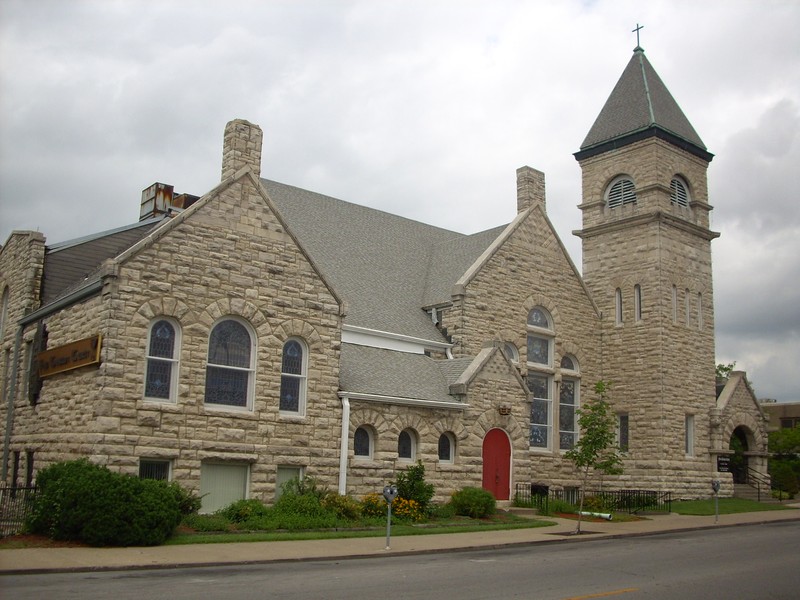First Christian Church of Columbia, Missouri
Introduction
Text-to-speech Audio
Images
2009 photo of the First Christian Church of Columbia, Missouri.

Backstory and Context
Text-to-speech Audio
The First Christian Church organized in 1832 as one of the first Disciples of Christ congregations to form in central Missouri. The two-part building consists of the Sanctuary built in 1893 and the connected Clarence E. Lemmon Education Building erected in 1929. The Sanctuary is a representative example of the Richardsonian Romanesque style that grew popular during the 1890s. The Education Building exhibits a more classical style reflective of the 1920s.
Two of the denomination's founders, Alexander Campbell and Barton W. Stone, visited the Columbia church more than once in the early years, between 1832 and 1852, which speaks to its significance. The Columbia congregation started construction on its first permanent structure in 1836, followed by the erection of a more substantial structure that opened in 1861. Finally, in 1893, they built the church that stands today.
First Christian Church members often played significant roles in and near Columbia. A couple of examples include Church disciple James Shannon, who served as the second president of the University of Missouri as well as the first president of Culver-Stockton College in Canton, Missouri. The Culver-Stockton founder, Pat Henderson, was also a member of the First Christian Church. Meanwhile, Luella St. Clair-Moss became one of the first deaconesses of the congregation. She served two terms as president of Christian College, president of Hamilton College in Lexington, Kentucky, member of the church's national board of education, vice president of the Disciples of Christ International Convention in Washington, D.C., 1930, and operated as an activist looking to seek women's suffrage in Missouri.
The congregation grew substantially by the 1920s, requiring the church to consider building a new home or expanding their current church. Pastor Dr. Carl Agee successfully attempted to raise additional money through fundraising, but the project went forward regardless. The second building of the church opened in May of 1929, five months before the Wall Street crash and the start of the Great Depression. A few months after the crash, Dr. Agee resigned his position at the church and accepted a job to become dean of Missouri Bible College.
Dr. Clarence E. Lemmon served as the first lengthy head pastor in the new church, serving from the 1930s through the 1960s. He proved to be a liberal activist in the church by encouraging the acceptance of members from other denominations and pushing for civil rights in the community. His paper, "Crisis of Fellowship," was read by a U.S. Ambassador to the United Nations. Over the years, Dr. Lemmon published numerous articles and books, traveled the country as a speaker, and received several awards and recognitions.
The church remains active today, but it stands as a reminder of the development of Columbia during the 19th century and the significant role the church played in that urban growth. Member of the church help build the community, played active roles in pursuing social justices, served on numerous academic boards, and helped turn Columbia into a recognizable city at a time when much of the country transitioned from mainly rural to predominantly urban.
Sources
Dains, Mary K. and Bonnie Stepenoff. "Nomination Form: First Christian Church." National Register of Historic Places. mo.gov. July 9, 2010. https://dnr.mo.gov/shpo/nps-nr/91001590.pdf.
"History A Brief History of First Christian Church, Columbia, MO." First Christian Church. firstchristian.org. Accessed March 24, 2020. http://firstchristian.org/about/history/.
Kirkendall, Richard S. A History of Missouri: 1919 to 1953. Vol. 5. Columbia, Missouri::University of Missouri Press, 2004.
Sapp, David. Boone County Chronicles. Columbia, Mo: Boone County Historical Society, 2000.
By HornColumbia - Own work, CC0, https://commons.wikimedia.org/w/index.php?curid=7220859
